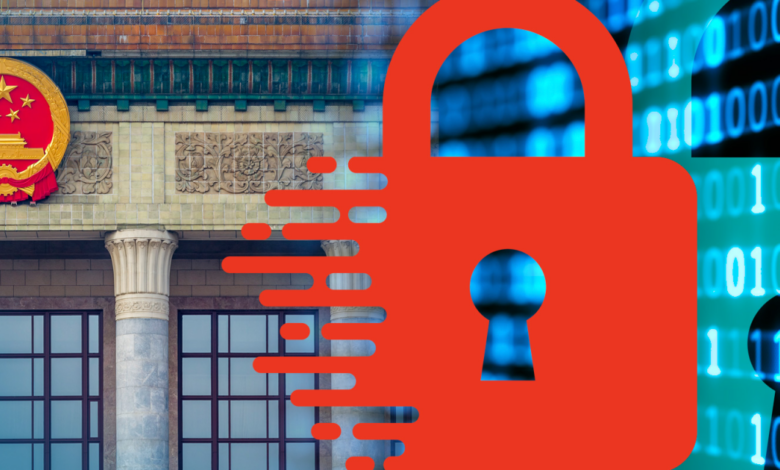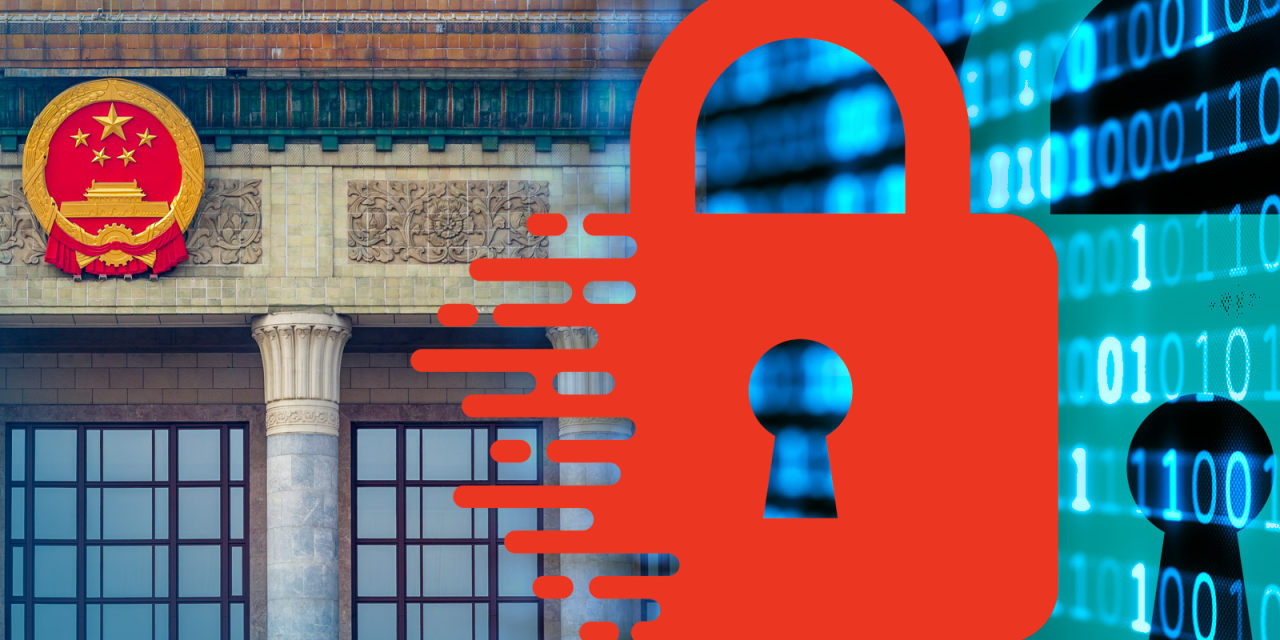
China Data Security Law Bars Online Firms at 1 Million Users
China Data Security Law Bars Online Companies with 1 Million Users – this headline alone throws a significant wrench into the gears of China’s booming digital economy. The new law, with its stringent data security requirements and hefty penalties for non-compliance, is forcing a major reassessment for countless online businesses operating within the country. It’s not just about fines; it’s about the potential for market disruption, shifting competitive landscapes, and a fundamental reshaping of how data is handled and protected.
This law impacts everything from how companies store and encrypt user data to how they navigate international data transfers. The implications are far-reaching, affecting not only domestic companies but also foreign businesses with a significant presence in China. This post delves into the specifics of the law, exploring its impact on businesses, users, and the global digital landscape.
Impact on Online Businesses
China’s new data security law, with its stringent requirements for companies exceeding one million users, presents a significant challenge to the nation’s online business landscape. The implications extend far beyond simple compliance; they touch upon economic viability, competitive dynamics, and the very structure of the digital market. Understanding these impacts is crucial for businesses operating within China, and for those considering entry.Economic Consequences for Large Online CompaniesThe law’s impact on the bottom line for companies exceeding the one million user threshold is substantial.
Compliance necessitates significant investments in infrastructure upgrades, data security protocols, and legal expertise. This includes costs associated with data localization, enhanced cybersecurity measures, and potentially the development of new internal systems to manage data in accordance with the law. For smaller companies, especially startups, these costs could prove prohibitive, potentially hindering growth or even forcing market exit.
Larger, established companies will likely absorb these costs more easily, but they will still face considerable financial strain. One can imagine a scenario where a company must allocate a significant portion of its annual budget to ensure compliance, impacting other areas like marketing or product development.Effects on the Competitive LandscapeThe new regulations will inevitably reshape China’s digital market. Larger companies with more resources are better positioned to navigate the compliance complexities, creating a potential barrier to entry for smaller players.
China’s new data security law impacting online companies with over a million users is a game-changer. This highlights the urgent need for robust, secure, and scalable app development solutions, which is why I’ve been diving into the exciting world of domino app dev, the low-code and pro-code future , to see how it can help businesses navigate these complex regulations.
Ultimately, the implications of this law will push developers to prioritize secure, compliant app development practices more than ever before.
This could lead to increased market consolidation, with larger companies gaining a stronger foothold and smaller businesses struggling to compete. Furthermore, the uneven playing field could stifle innovation, as smaller companies may be less willing to invest in the necessary technologies and expertise to meet the regulatory requirements. This could result in a less dynamic and diverse digital market in the long term.Compliance Challenges and CostsMeeting the requirements of the data security law presents numerous compliance challenges.
China’s new data security law, impacting online companies with over a million users, highlights the urgent need for robust data protection strategies. This makes understanding solutions like cloud security posture management even more critical; check out this insightful article on bitglass and the rise of cloud security posture management to learn more. The implications for companies affected by the Chinese law are significant, demanding a proactive approach to data security.
These challenges are not limited to technological aspects; they also include legal and operational hurdles. Companies must thoroughly assess their existing data handling practices, implement robust data security measures, and ensure they have the necessary legal frameworks in place. The cost of achieving compliance can be substantial, encompassing not only direct expenses such as software upgrades and legal consultations but also indirect costs such as lost productivity during the implementation phase.
This places a considerable burden on businesses, particularly those with limited resources. For example, a small e-commerce platform might need to invest in entirely new data centers to ensure data localization, a considerable undertaking.Legal Ramifications of Non-ComplianceNon-compliance with the data security law carries severe penalties. The following table summarizes potential violations, penalties, examples, and mitigation strategies:
| Violation | Penalty | Example | Mitigation Strategy |
|---|---|---|---|
| Failure to implement adequate data security measures | Significant fines, suspension of operations | A social media platform experiencing a data breach due to inadequate security protocols. | Regular security audits, investment in robust cybersecurity infrastructure, employee training. |
| Unauthorized transfer of personal data | Heavy fines, criminal prosecution | An online retailer transferring user data to a server located outside of China without proper authorization. | Strict adherence to data localization requirements, robust data transfer protocols, and legal counsel. |
| Failure to provide data transparency to users | Fines, reputational damage | A gaming company failing to inform users about the collection and use of their personal data. | Clear and concise privacy policies, transparent data collection practices, and user consent mechanisms. |
| Non-compliance with data subject access requests | Fines, legal action from affected users | An online service provider failing to respond to a user’s request to access or delete their personal data. | Establish clear procedures for handling data subject access requests, ensure timely responses, and provide user-friendly access tools. |
Data Security Measures
China’s Cybersecurity Law and related regulations, particularly impacting online companies with over one million users, mandate a robust set of data security measures. These measures aim to protect user data within China’s borders and ensure compliance with the government’s broader digital sovereignty goals. Understanding these requirements is crucial for businesses operating within the Chinese digital ecosystem.The specifics of data security measures under the law are extensive and multifaceted.
They cover various aspects of data handling, from storage and processing to cross-border transfers and incident response. This intricate web of regulations necessitates a comprehensive understanding and meticulous implementation to avoid penalties.
Specific Data Security Measures Mandated by Law
The law Artikels several key data security measures. These include mandatory data localization (requiring data storage within China), stringent data encryption requirements, comprehensive data breach notification protocols, and robust cybersecurity risk assessment and management frameworks. Furthermore, companies are obligated to appoint data protection officers and implement detailed data processing agreements. Failure to comply can lead to substantial fines and operational disruptions.
Comparison with Data Protection Regulations in Other Major Economies
Compared to regulations like GDPR (General Data Protection Regulation) in the European Union or CCPA (California Consumer Privacy Act) in the United States, China’s data security measures exhibit key differences. While GDPR and CCPA focus heavily on user consent and data portability, the Chinese approach emphasizes national security and state control. For instance, GDPR’s emphasis on individual rights to data access and erasure is less prominent in the Chinese framework, which prioritizes data security within the national context.
The CCPA, while focused on consumer rights, lacks the extensive data localization requirements seen in China’s laws. This contrast highlights the different philosophical underpinnings of data protection across jurisdictions.
Technological Implications for Companies
Compliance with China’s data security laws necessitates significant technological investments for online companies. This includes substantial infrastructure upgrades to accommodate data localization requirements, potentially involving the establishment of new data centers within China. Software changes are also inevitable, requiring integration of advanced encryption technologies, robust access control systems, and comprehensive data audit trails. Companies will need to invest in advanced security tools and training for their personnel to effectively manage the increased complexity of their data security landscape.
The cost of compliance can be substantial, potentially impacting profitability and competitiveness.
Data Encryption Methods
Implementing robust data encryption is a cornerstone of compliance. Companies must adopt methods appropriate for the sensitivity of the data being protected. A variety of encryption methods can be employed, each offering different levels of security and complexity.
- Symmetric Encryption: Algorithms like AES (Advanced Encryption Standard) use the same key for both encryption and decryption. This is efficient but requires secure key exchange mechanisms.
- Asymmetric Encryption (Public Key Cryptography): Algorithms like RSA (Rivest–Shamir–Adleman) use separate public and private keys. This enables secure key exchange and digital signatures but is computationally more intensive.
- Homomorphic Encryption: This allows computations to be performed on encrypted data without decryption, offering a high level of security but with significant computational overhead.
- End-to-End Encryption: This protects data throughout its entire lifecycle, from sender to receiver, preventing unauthorized access even by the service provider. Examples include the encryption used in many messaging applications.
The choice of encryption method will depend on factors such as the sensitivity of the data, the level of security required, and the computational resources available. A multi-layered approach, combining different encryption methods, is often the most effective strategy.
User Privacy and Rights

The China Data Security Law’s impact on user privacy and data protection rights is significant, representing a major shift in how personal information is handled online. While the law aims to enhance security, its practical implications for individual users require careful consideration. The balance between national security concerns and individual freedoms is a key aspect of this legislation.The law grants users several crucial rights regarding their personal data.
It’s not merely about companies storing data securely; it’s about empowering individuals to understand and control how their information is used. This empowers users to take a more active role in protecting their digital privacy.
User Data Control Mechanisms
The law provides users with specific mechanisms to control their personal data. For instance, users have the right to access their data, request corrections of inaccuracies, and even demand deletion under certain circumstances. Companies are obligated to respond to these requests within a reasonable timeframe, promoting transparency and accountability. Imagine a scenario where a user discovers an outdated address associated with their account.
Under this law, they have the right to request the correction of this information, ensuring their data remains accurate and up-to-date. Furthermore, if a user believes a company is mishandling their data, they can file a complaint with relevant authorities.
Challenges in Enforcing User Rights
While the law Artikels user rights, enforcing them presents considerable challenges. One key difficulty lies in the sheer scale of online data and the resources required for effective oversight. Another challenge involves the interpretation and application of the law’s provisions. Ambiguities in the text could lead to inconsistencies in enforcement across different companies and jurisdictions. For example, determining what constitutes a “reasonable timeframe” for responding to data access requests could vary depending on the context and the specific company.
This lack of clear-cut guidelines could lead to delays or even denial of user rights. Additionally, users may face difficulties navigating the complaint process and proving their claims, potentially lacking the resources or expertise to effectively challenge companies.
Flowchart: Exercising Data Rights Under the Law
The following flowchart illustrates the process for users to exercise their data rights under the new law. This is a simplified representation, and the specific steps may vary depending on the company and the nature of the request.[A flowchart would be inserted here. Since I cannot create images, I will describe it textually. The flowchart would begin with a “Start” box.
This would lead to a decision box: “Do you need to access, correct, or delete your data?”. A “Yes” branch would lead to a box: “Submit a formal request to the relevant company”. This would lead to a box: “Company reviews the request (within a reasonable timeframe)”. This would lead to a decision box: “Request approved?”.
A “Yes” branch would lead to a box: “Data action completed”. A “No” branch would lead to a box: “Company provides explanation and/or denial”. This would lead to a decision box: “Satisfied with response?”. A “Yes” branch would lead to a box: “End”. A “No” branch would lead to a box: “File a complaint with relevant authorities”.
This would lead to a box: “Authorities investigate the complaint”. This would lead to a box: “Resolution/Outcome”. This would finally lead to an “End” box. The “No” branch from the initial decision box would lead directly to an “End” box.]
International Implications

The China Data Security Law’s impact extends far beyond its borders, significantly affecting foreign companies and reshaping the global landscape of data governance. Its stringent regulations and unique approach to data sovereignty present both challenges and opportunities for international businesses operating in or interacting with China. Understanding these implications is crucial for navigating the increasingly complex world of cross-border data flows.The law’s potential impact on foreign companies operating in China is substantial.
Companies with over one million users in China must comply with the law’s extensive requirements, including data localization, security assessments, and cross-border data transfer protocols. Failure to comply can lead to significant penalties, including fines, operational disruptions, and reputational damage. This necessitates a thorough understanding of the law and the implementation of robust data governance frameworks tailored to the Chinese context.
Companies must invest in resources and expertise to ensure compliance, which can represent a considerable financial burden, especially for smaller enterprises.
Comparison with International Data Privacy Standards
The Chinese Data Security Law differs significantly from international data privacy standards like the GDPR (General Data Protection Regulation) in the European Union and the CCPA (California Consumer Privacy Act) in the United States. While these regulations focus primarily on individual user rights and data protection, the Chinese law prioritizes national security and data sovereignty. This difference in emphasis leads to varying approaches to data localization, cross-border data transfers, and enforcement mechanisms.
For instance, the GDPR emphasizes individual consent and data portability, whereas the Chinese law grants greater authority to the government in regulating data flows. This creates challenges for companies striving for global consistency in their data handling practices.
Impact on Cross-Border Data Flows and International Collaborations
The law’s impact on cross-border data flows is profound. The requirement for data localization and stringent controls on cross-border transfers can impede international collaborations and hinder the free flow of information. This could lead to increased costs, delays, and complexities for multinational corporations operating in China. Furthermore, the law’s broad definition of “important data” leaves room for interpretation and potential uncertainty, adding to the challenges faced by businesses seeking to comply.
International collaborations involving the sharing of data with Chinese entities will require careful planning and compliance with the law’s provisions to avoid potential legal repercussions.
Data Localization Requirements Across Jurisdictions
The following table provides a comparative analysis of data localization requirements across several jurisdictions. Note that these requirements can be complex and subject to change, so it’s crucial to consult up-to-date legal advice.
| Country | Requirement | Penalties | Implications for Businesses |
|---|---|---|---|
| China | Data localization requirements vary depending on the type of data and industry. “Important data” must often be stored within China. | Fines, operational suspensions, reputational damage. | Significant investment in local infrastructure and compliance measures. Increased operational complexity and costs. |
| European Union (GDPR) | No blanket data localization requirement, but data transfers to countries outside the EU must meet specific conditions. | Significant fines, legal action. | Need for robust data protection measures and mechanisms for compliant data transfers. |
| United States (CCPA) | No explicit data localization requirement, but data security and breach notification laws apply. | Fines, legal action. | Focus on data security and consumer rights. Need for transparent data handling practices. |
| India | Increasing focus on data localization, with specific regulations emerging for various sectors. | Fines, legal action. | Growing need for compliance with evolving data localization rules. |
Government Oversight and Enforcement
The China Data Security Law (DSL), enacted in 2020, doesn’t just lay down rules; it establishes a robust system of government oversight and enforcement to ensure compliance. Several agencies play crucial roles in interpreting, implementing, and enforcing the law, wielding significant power over online businesses operating within China. The penalties for non-compliance can be substantial, impacting not only the financial health of companies but also their reputation and future operations in the Chinese market.The enforcement of the DSL is a multi-faceted process involving investigation, penalties, and dispute resolution mechanisms.
This system is designed to ensure both the protection of user data and the fair treatment of businesses operating under the law. However, the opaque nature of some enforcement actions and the potential for arbitrary interpretations remain points of concern for both domestic and international observers.
Key Government Agencies and Their Responsibilities
The Cyberspace Administration of China (CAC), the Ministry of Public Security (MPS), and the National Development and Reform Commission (NDRC) are among the key players in overseeing the implementation of the DSL. Their responsibilities are interwoven, creating a complex regulatory landscape.
The CAC is the primary agency responsible for regulating internet content and online activities, including data security. Their role extends to formulating regulations, conducting inspections, and issuing penalties for violations related to data processing and transfer.
The MPS focuses on the criminal aspects of data security breaches. They investigate serious violations that may involve criminal intent or significant harm to national security or public interest.
The NDRC plays a supporting role, focusing on the economic aspects of data security. They may be involved in setting industry standards and promoting compliance through economic incentives and penalties.
Examples of Enforcement Actions
While specific details of enforcement actions are often not publicly available due to confidentiality concerns, several cases highlight the government’s willingness to act against violators. For example, in 2021, several companies faced significant fines for failing to adequately protect user data, demonstrating the seriousness with which the government views compliance. These fines served as a strong deterrent to other companies considering similar lapses in security protocols.
Other actions include issuing warnings, suspending operations, and even revoking licenses. The exact penalties imposed depend on the severity and nature of the violation.
Dispute Resolution and Redress for Affected Users
The DSL provides limited mechanisms for users to seek redress for violations of their data rights. While individuals can report violations to relevant agencies, the process can be complex and the outcome uncertain. There is a lack of established independent bodies to handle user complaints effectively and ensure timely resolution. The government emphasizes self-regulation and industry cooperation in addressing user grievances, but this approach has limitations in ensuring adequate protection for individual users.
Furthermore, the lack of transparency in the dispute resolution process can further hinder users’ ability to seek redress.
Future Trends and Developments: China Data Security Law Bars Online Companies With 1 Million Users

The China Data Security Law, while impactful in its current form, is likely to undergo further evolution as the digital landscape continues to shift and mature. Understanding these potential trends is crucial for businesses operating within China and for shaping the future of the country’s digital economy. The law’s ongoing development will be influenced by technological advancements, evolving international norms, and the government’s strategic objectives for digital sovereignty and economic growth.The law’s impact will be increasingly felt across various sectors, demanding a proactive and adaptive approach from companies.
We can expect a period of refinement and clarification, potentially leading to more detailed regulations and guidance on specific data processing activities. The interplay between the Data Security Law and other related regulations, such as the Personal Information Protection Law (PIPL), will also shape future developments, leading to a more integrated and comprehensive legal framework.
Potential Areas for Future Legislative Changes
Amendments and clarifications are anticipated in several key areas. For instance, the definition of “important data” might be refined to provide greater clarity and reduce ambiguity. This could involve specifying data types, sensitivity levels, and criteria for classification. Further guidance on cross-border data transfers is also likely, potentially establishing clearer pathways and mechanisms for compliant international data flows.
Finally, we anticipate increased scrutiny of data security practices within specific sectors, leading to sector-specific regulations or guidelines tailored to address unique data handling challenges. For example, the financial services sector might face more stringent requirements compared to the e-commerce sector.
Best Practices for Ongoing Compliance
Companies should prioritize proactive compliance strategies. This involves conducting regular data audits to identify and address vulnerabilities, implementing robust data governance frameworks, and investing in advanced data security technologies. Establishing clear data processing policies and procedures, including mechanisms for user consent and data subject access requests, is essential. Furthermore, maintaining comprehensive documentation of data processing activities and engaging in regular training for employees on data security best practices is vital for demonstrating compliance.
Proactive collaboration with regulators and seeking legal counsel can also mitigate risks and ensure adherence to evolving standards. Regular security assessments and penetration testing can help identify weaknesses before they can be exploited.
Influence on Technological Innovation, China data security law bars online companies with 1 million users
The Data Security Law is likely to stimulate innovation in data security technologies. The demand for robust data protection solutions will drive the development of new encryption methods, secure data storage solutions, and advanced threat detection systems. We can expect to see increased investment in technologies like blockchain, AI-powered security tools, and federated learning, all aimed at enhancing data security while preserving data utility.
This regulatory pressure will push companies to adopt and develop cutting-edge technologies to remain compliant and competitive. For instance, the development of homomorphic encryption techniques, which allow for computation on encrypted data without decryption, could become more prevalent to facilitate compliant data sharing and analysis.
Final Wrap-Up
The China Data Security Law’s impact on online companies with over one million users is profound and multifaceted. From significant compliance costs and potential legal repercussions to the reshaping of China’s digital market, this law is a game-changer. While aimed at enhancing data security and user privacy, the law’s implications extend far beyond China’s borders, influencing international data flows and raising important questions about data sovereignty and global digital governance.
Navigating this complex legal landscape will require careful planning, strategic adaptation, and a commitment to robust data security practices.
Answers to Common Questions
What happens if a company doesn’t comply with the law?
Non-compliance can result in significant fines, operational disruptions, and even legal action, including potential business closures.
Does the law apply to all types of data?
The law applies to a broad range of data, including personal information, business data, and other sensitive information deemed crucial to national security.
How does this law compare to GDPR?
While both aim to protect user data, the Chinese law has a stronger emphasis on national security and government oversight compared to the EU’s GDPR.
What support is available for companies to comply?
While specific support mechanisms may vary, consulting firms specializing in Chinese data security law offer guidance and assistance to companies.
